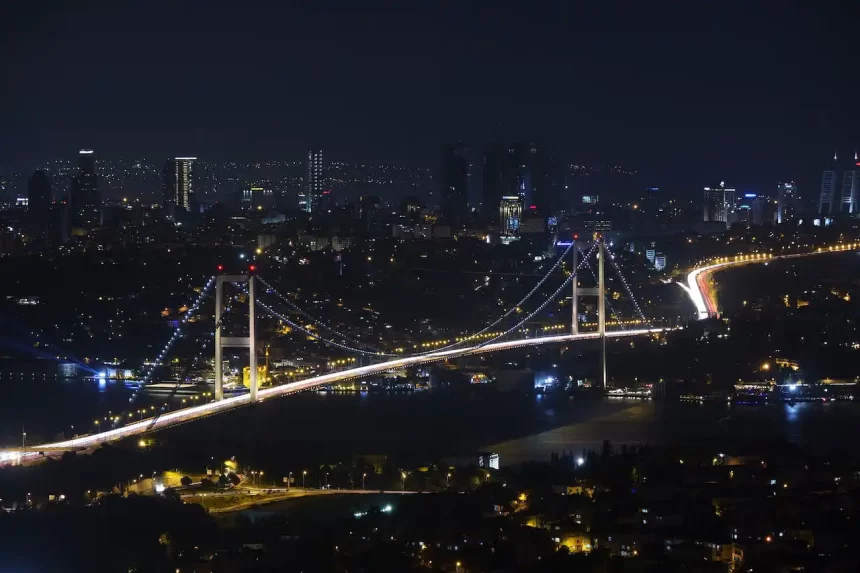Istanbul, a city that straddles two continents, is a unique blend of European and Asian influences, rich in history and culture. This vibrant metropolis offers an array of attractions, from ancient monuments and grand palaces to bustling markets and scenic cruises. Each site in Istanbul tells a story, reflecting the city’s complex past and dynamic present.
Hagia Sophia: A Testament to Byzantine and Ottoman Glory
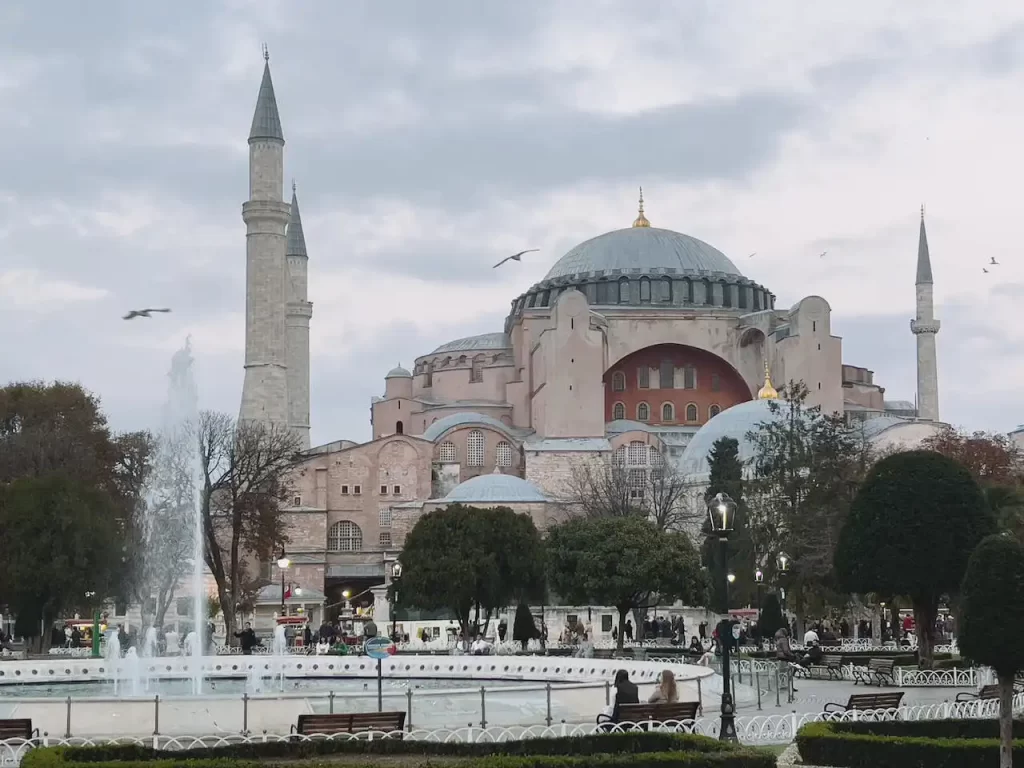
History and Architecture
Hagia Sophia, originally built as a cathedral in the 6th century, stands as a testament to Byzantine and Ottoman architectural splendor. Its massive dome, once the world’s largest, and intricate mosaics exemplify Byzantine artistry. After the Ottoman conquest, it was converted into a mosque, and now serves as a museum, symbolizing the city’s diverse religious history.
Visitor Experience
Tourists can explore the interior’s stunning mosaics, calligraphy, and the impressive dome. The upper galleries, accessible via a series of ramps, offer close-up views of the artwork and panoramic vistas of the nave.
Blue Mosque: A Jewel of Islamic Architecture

Design and Significance
The Blue Mosque, known for its six minarets and striking blue İznik tiles, is an architectural marvel of the Ottoman era. Built by Sultan Ahmet I, it showcases traditional Islamic architecture with a Byzantine influence, particularly in its dome and layout.
Inside the Mosque
Visitors are welcomed outside prayer times. The interior is adorned with more than 20,000 handmade ceramic tiles in various tulip designs and more than 200 stained glass windows.
Topkapi Palace: A Glimpse into Ottoman Splendor

Historical Importance
Once the heart of the Ottoman Empire, Topkapi Palace served as the residence and administrative headquarters of the sultans. The palace complex is a sprawling testament to Ottoman power, complete with ornate courtyards, pavilions, and a treasury.
Highlights for Visitors
Tourists can explore the lavish chambers, the Harem where the sultan’s family lived, and the Imperial Treasury, housing priceless artifacts including the Prophet Muhammad’s belongings.
Grand Bazaar: A Shopper’s Paradise
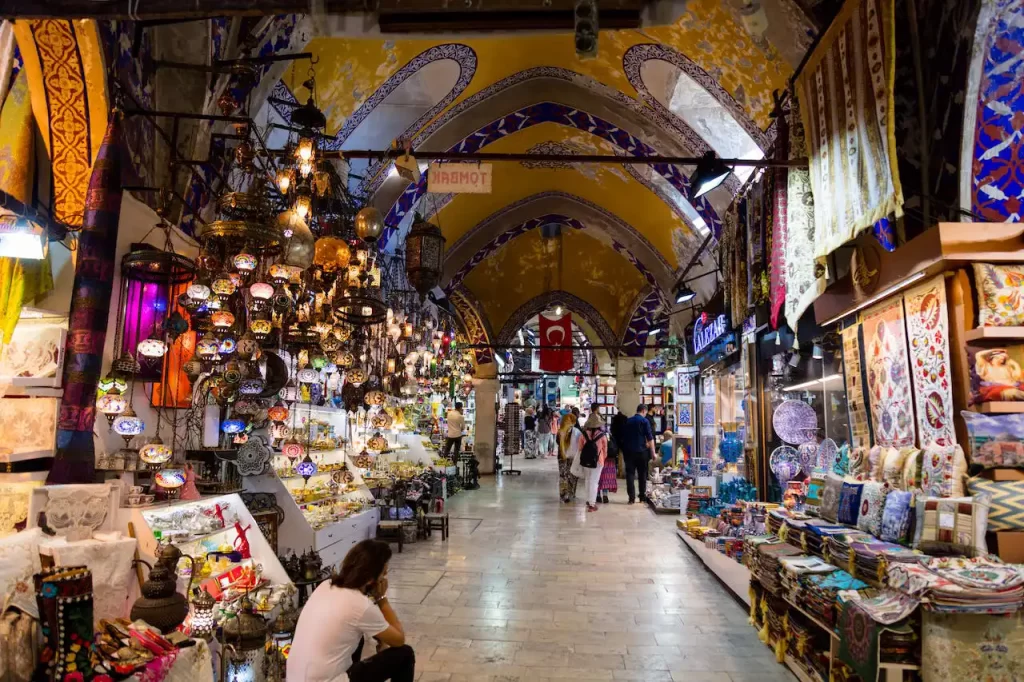
Market History and Layout
With a history spanning over 500 years, the Grand Bazaar is one of the largest and oldest covered markets globally. Its labyrinthine alleys host over 4,000 shops selling a myriad of goods.
Shopping and Culture
Visitors can shop for authentic Turkish handicrafts, jewelry, carpets, and spices. The bazaar is also a cultural experience, reflecting the vibrant commerce of Istanbul.
Bosphorus Cruise: Between Two Continents

Scenic Views and Significance
A cruise on the Bosphorus offers unparalleled views of Istanbul’s European and Asian sides. The strait is a vital international shipping lane and provides a stunning backdrop to the city’s historical sites.
Cruise Experience
Several types of cruises are available, from short tours to full-day excursions. Highlights include views of palaces, Ottoman-era villas, and the Bosphorus bridges.
Galata Tower: Panoramic Views of Istanbul

Historical Background
Galata Tower, a medieval stone tower built by the Genoese in 1348, is one of Istanbul’s most iconic landmarks. Originally a fire tower and later a prison and observatory, it now serves as a popular tourist spot.
Visiting Experience
Visitors can climb to the top for a panoramic view of Istanbul, encompassing the old city, the Golden Horn, and the Bosphorus Strait. The tower also houses a restaurant and café, offering a unique dining experience with a view.
Istanbul Archaeology Museums: A Treasure Trove of History

The Collection
This complex of three museums houses an extensive collection of artifacts from Turkey and the surrounding regions. The collection includes items from the Ottoman Empire, ancient Mesopotamia, and Egypt, among others.
Key Exhibits
Highlights include the Alexander Sarcophagus, considered one of the most important pieces of ancient art, and the Treaty of Kadesh, the oldest known peace treaty in the world.
Suleymaniye Mosque: A Masterpiece of Ottoman Architecture

Architectural Significance
Designed by the famous architect Mimar Sinan, the Suleymaniye Mosque is one of Istanbul’s largest mosques and a prime example of Ottoman Islamic architecture. Built for Sultan Suleiman the Magnificent, it combines grandeur with exquisite beauty.
Visitor Highlights
The mosque complex includes a hospital, a kitchen, a library, and the tombs of Sultan Suleiman and his wife Hürrem Sultan (Roxelana).
Chora Church: A Byzantine Gem

Art and Architecture
Chora Church, known for its stunning mosaics and frescoes, is a significant example of late Byzantine art. The intricate designs depict biblical scenes and figures, offering a window into medieval Christian iconography.
Museum Conversion
Originally a church, then a mosque, the building has been converted into a museum, allowing visitors to appreciate its art and architecture fully.
Dolmabahce Palace: A Blend of East and West

Historical Importance
Dolmabahce Palace, built in the 19th century, marks a shift from traditional Ottoman architecture, incorporating European styles. This palace served as the administrative center of the late Ottoman Empire.
Attractions for Visitors
The palace is famed for its luxurious interior, including a crystal staircase, ornate ceilings, and the largest Bohemian crystal chandelier in the world.
Istiklal Avenue: The Heart of Modern Istanbul
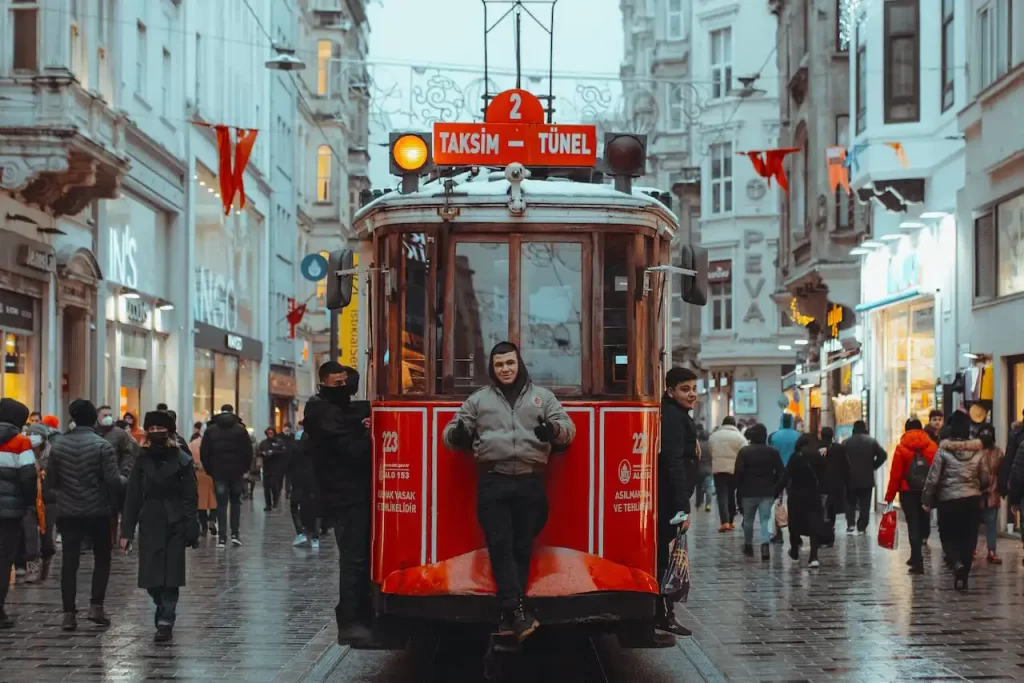
Vibrant Street Life
This bustling pedestrian street is lined with historic buildings, shops, art galleries, cafes, and restaurants. It’s a hub of activity both day and night and reflects Istanbul’s modern, cosmopolitan side.
Cultural Significance
Istiklal Avenue also hosts cultural centers, cinemas, and theaters, making it a center for contemporary arts and entertainment in Istanbul.
Spice Bazaar: A Feast for the Senses
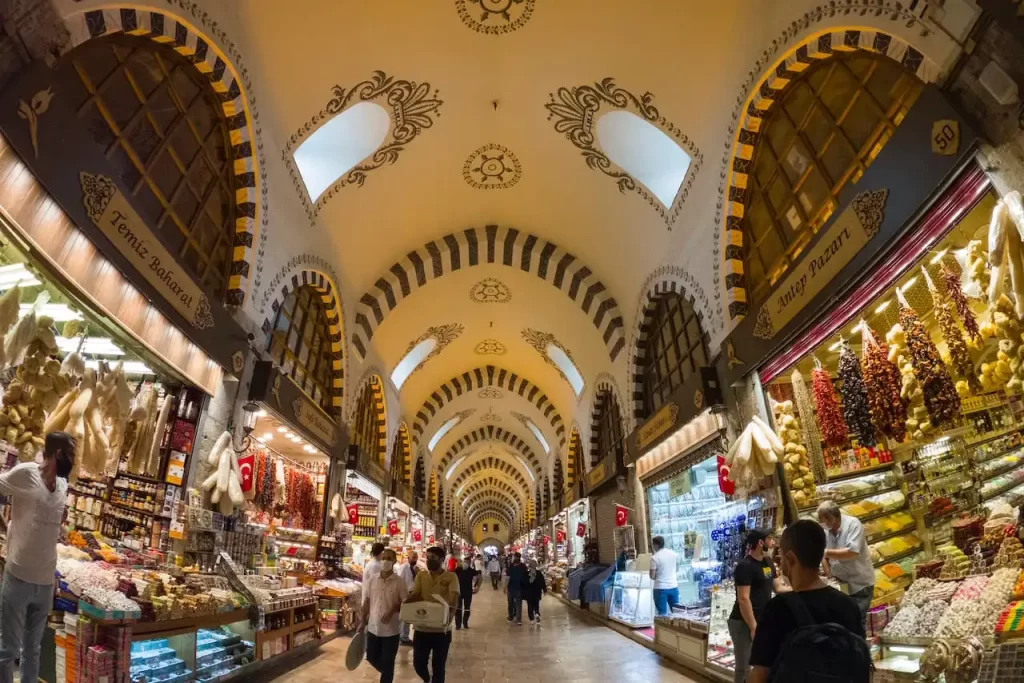
Market Experience
The Spice Bazaar, also known as the Egyptian Bazaar, is a vibrant marketplace known for its array of spices, herbs, sweets, and dried fruits. It’s a sensory overload with its colors, aromas, and bustling energy.
Culinary Discoveries
Visitors can sample Turkish delights, local cheeses, and an array of exotic spices. The bazaar is also an excellent place for buying authentic Turkish souvenirs and gifts.
Frequently Asked Questions (FAQs)
Q: Do I need a guide to visit these attractions in Istanbul? A: While it’s possible to explore these attractions independently, hiring a guide can provide deeper insights into Istanbul’s history and culture.
Q: Are there any entry fees for these attractions? A: Yes, most major attractions like Hagia Sophia, Topkapi Palace, and Dolmabahce Palace have entry fees. Prices vary, so it’s best to check the latest fees online.
Q: What is the best time to visit Istanbul’s attractions? A: Spring (April to June) and fall (September to November) are ideal, as the weather is pleasant and there are fewer tourists.
Q: Is Istanbul safe for tourists? A: Istanbul is generally safe for tourists. However, like in any major city, it’s advisable to stay aware of your surroundings and take standard safety precautions.
Q: Can I visit the religious sites in Istanbul with any dress code? A: Yes, but modest dress is required. For mosques, women should cover their heads, and both genders should wear clothing that covers knees and shoulders.
